Media Art in the Information Society: An Interview with Media Artists Christa Sommerer and Laurent Mignonneau
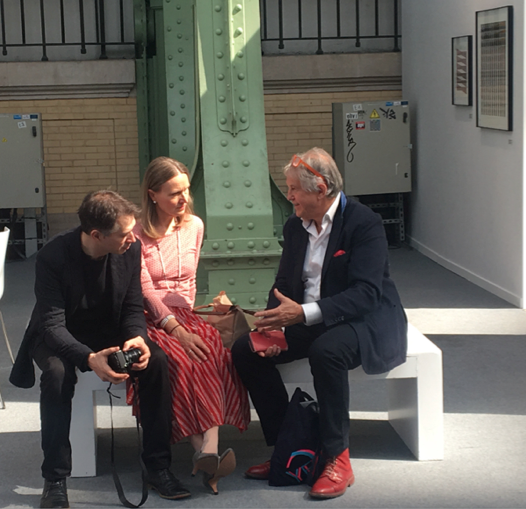
"We are media artists and professors of Interface Cultures at the University of Art and Design in Linz, Austria. We develop interactive art installations that allow participants to get involved in art works."
Etienne Verbist for ArtDependence Magazine: Who are you and why do you do what you do?
Christa Sommerer and Laurent Mignonneau: Our names are Christa Sommerer and Laurent Mignonneau. We are media artists and professors of Interface Cultures at the University of Art and Design in Linz, Austria. We develop interactive art installations that allow participants to get involved in art works.
EVB: What is your goal?
CS&LM: To create interactive art works that allow user participation, challenge the concept of what an artwork is and create open-ended, process-based interaction scenarios. The art works are very diverse in nature, some of them use genetic algorithms and complex system principles. For some of them, we develop natural interfaces and some of them deal with interaction and user participation in a more conceptual manner.
EVB: What will be the impact of what you do?
CS&LM: We started our artistic practice in the early 1990’s when only very few artists used computer technology for their art practices. Our first interactive art work from 1992 was called "Interactive Plant Growing.” Here users could touch real plants to grow artificial plants on a projection screen (see image). The media art scene was very small back then and everyone knew each other. Now there are hundreds of media art programs worldwide and media art is an established discipline. Through our artistic and educational practice, we have contributed 27 years to this proliferation.
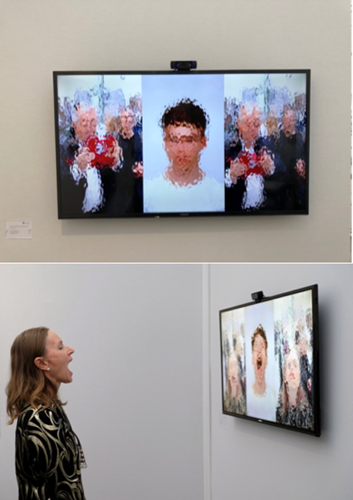
Neuro Mirror interactive installation ©2017, Laurent Mignonneau & Christa Sommerer

Eau de Jardin interactive installation ©2004, Christa Sommerer & Laurent Mignonneau
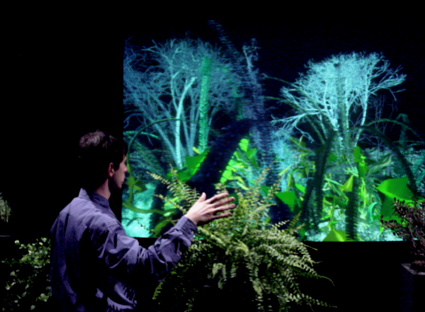
Interactive Plant Growing, interactive installation ©1992, Christa Sommerer & Laurent Mignonneau
EVB: What is the future of art?
CS&LM: In the future, art will become increasingly multidisciplinary and media technology will be more integrated into works of art. Artists will be less reluctant to use digital technologies and will deal more with actual issues of our information society.
EVB: What are your thoughts about the art market?
CS&LM: The art market is now more open to include digital art and art that is process-based. The pioneers of digital art get more attention and it becomes clear that this digital heritage needs to be preserved. Museums and organizations are now looking at how this heritage can be stored and preserved and the first collectors of digital art also contribute to its acceptance and survival. The creates a new art market for digital art and stakeholders such as artists, galleries, collectors, museums and organizations are interested in longer-term preservation strategies.
EVB: What is your dream project?
CS&LM: Right now, we are working on a large portrait series of influential media art pioneers, such as artists, curators, researchers and gallerists, all of them are our colleagues and friends. We create their large-scale portraits through our "Portrait on the Fly" software, that turns their faces into a composition of hundreds of flies. The plan is to exhibit a large number of these portraits in a major museum, mapping the field of media art from our personal point of view.
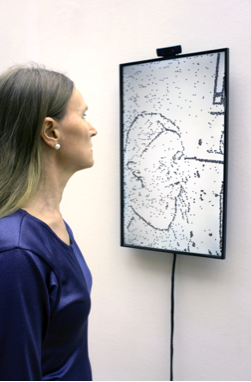
Portrait on the Fly interactive installation ©2015, Laurent Mignonneau & Christa Sommerer
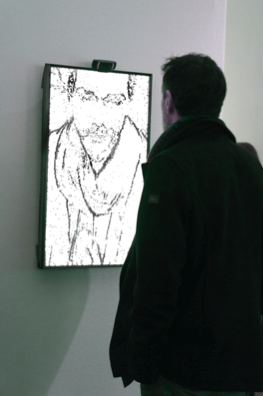
Portrait on the Fly interactive installation ©2015, Laurent Mignonneau & Christa Sommerer

Portrait on the Fly (Portrait of Etienne Verbist) ©2018, Laurent Mignonneau and Christa Sommerer
EVB: What role does the artist have in society?
CS&LM: We see ourselves as artists and researchers who address relevant issues in our society through the use of technology. We create participatory experiences where the audience can get involved through their bodily senses.
EVB: What memorable responses have you had to your projects?
CS&LM: Every exhibition gives us great feedback and reactions range from amazement to enthusiastic comments about the participants’ experiences. We usually discuss with the audience and get a very direct sense of how the exhibits work for them, what they feel and what they like. We take this into account for the design of the next artworks or for updates.
EVB: What do you dislike about the art world?
CS&LM: Nothing in particular, except if it is not open to innovation and new concepts.
EVB: What role does art funding have?
CS&LM: Art funding is very important because artists need funds to realize their ideas and projects.
EVB: What research do you do?
CS&LM: We work as artists and researchers at the university. We create new forms of interfaces and interaction scenarios that did not exist before. We publish research papers and exhibit extensively. We also supervise master and PhD theses by our students who work on interactive art and interface design.
EVB: What is the best piece of advice you have been given?
CS&LM: We look to our teachers Peter Weibel and Roy Ascott, both important artists, researchers and educators and relentless innovators and visionaries.

Life Writer, interactive installation ©2006, Laurent Mignonneau & Christa Sommerer
EVB: What would you have done differently?
CS&LM: Nothing.
EVB: Which technologies do you use and combine, and why?
CS&LM: In our department of Interface Cultures at the University of Art and Design in Linz, we look at all these technologies and provide courses that make students familiar with these topics. In our own artistic work, we do not use any particular technology per se, but depending on the artistic message and concept, we develop specific interfaces or combine existing interfaces. We also question standard technologies and investigate what is behind these technologies, how they can be hacked, redesigned and appropriated.
EVB: What is the role of the people and the crowd in your project?
CS&LM: People are very important in our artworks, as we create our interactive installations for a public of all ages and all background. We want everyone to be able to participate and experience the works of art. We do not call them the "crowd" but the participants or audience.
EVB: How can they participate in your project?
CS&LM: In the case of our interactive installation "Interactive Plant Growing,” created in 1992 for example, by touching real plants and thus growing artificial plants on a large projection screen (see image); or in the case of our installation "A-Volve" from 1994, by designing shapes that become "alive" and then interacting with these virtual beings that live and reproduce in a pool filled with water (see image). In the case of our interactive installation "Life Writer" from 2006, by typing text on a type writer, which transforms the text into artificial life creatures that live and propagate on the paper (see image); and in the case of "Portrait on the Fly" from 2015, as people´s portraits that compose and decompose themselves from ten thousand small flies (see image). And in the case of "The Value of Art" from 2010, as interactive paintings that measure how long people look at these paintings and recalculate their monetary value depending on the users´ attention (see image).

The Value of Art, interactive paintings © 2010, Christa Sommerer & Laurent Mignonneau
EVB: How are you connected with the people or the crowd?
CS&LM: As mentioned above, through providing interactive exhibits where everyone can participate. However, these experiences are provided within an exhibition context in a museum, a gallery or a festival, not online on social media platforms.
EVB: The crowd economy creates meaningful experiences and shared value. How do you see it for your work?
CS&LM: The shared value is that we provide experiences that people take home with them and the exhibition is organized to make sure that these experiences can be realized, produced and financed. We get attention and promotion through user participation.
EVB: How do you use the crowd?
CS&LM: We prefer the term audience or public, not crowd.
EVB: How do you handle feedback?
CS&LM: By close observation of how the public reacts and talking to the public at the exhibitions.
EVB: What social media do you use?
CS&LM: Primarily exhibitions, social media such as Facebook and YouTube are used for the exhibition promotion and documentation.
